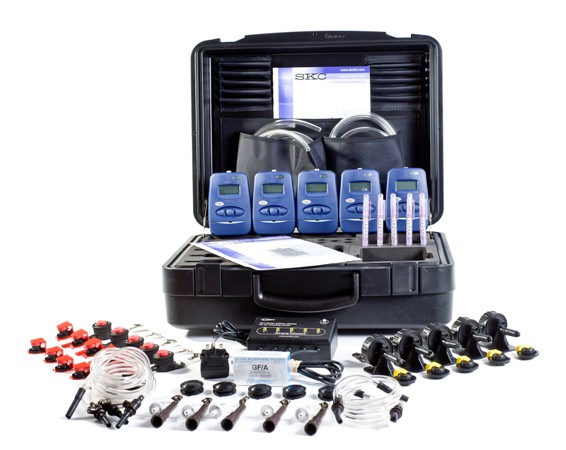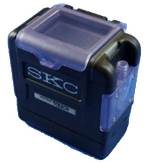Ensuring the safety and health of employees is paramount in any workplace and this often entails safeguarding against possible airborne dangers. Gases, vapours and particles of dust or from fibres can severely impact the lungs, kidneys and liver and can lead to serious illness.
Undertaking air sampling is vital. Each year in the UK, there are an estimated 13,000 deaths attributed to occupational diseases - in stark contrast, fatal workplace injuries were a mere 144 in the year 2017/2018 (Source, HSE). By routinely measuring the levels of airborne pollutants, we can mitigate exposure and prevent ailments like asthma and work-related cancer.
Understanding Air Sampling
Air sampling is a method that ensures that the air in your workplace aligns with set regulatory standards. This technique helps Occupational Hygiene and Health & Safety experts determine the degree of exposure that your workers have to potential airborne contaminants.
Globally respected bodies like the UK’s HSE or the USA’s OSHA have set exposure limits for a vast majority of substances that are deemed dangerous to health. These limits, termed Workplace Exposure Limits (WELs) by the HSE, define the maximum concentration of a potentially harmful substance that a worker can be exposed to, typically over an 8-hour shift.
For more information on these limits and approved methods of sampling, you can refer to document EH40 on the HSE website at www.hse.gov.uk.
How are contaminants classified?The Control of Substances Hazardous to Health Regulations 2002 (COSHH) outlines substances that pose health risks to workers. These harmful materials are grouped into the following categories:
Dusts: These are common across many industries, with potential problems caused not only from inhalation, but also potential explosions. Typical examples of hazardous dusts are from wood, flour, metal, and silica.
Fibres: Characterised by their elongated shape, fibres can be especially toxic due to their dimensions, composition, and ability to linger in the lungs. Asbestos, ceramic, and mineral fibres are prime examples.
Gases and Vapours: These cover a broad spectrum, can be toxic and dangerous and lead to acute or chronic health issues. Even the presence of non-toxic gases can be a serious problem if they displace oxygen, and some may be dangerous if they are absorbed through the skin.
Bioaerosols: These are common in industrial settings like waste management or composting sites. They can be infectious, produce toxins or cause auto-immune responses. Airborne viruses, bacterial spores and pollen are all in this category.
Interpreting measurements
Contaminants are measured in milligrams per cubic metre (mg/m3) for particles and parts per million (ppm) for gases. To explain this, imagine 1mg/m3 as a teaspoon of dust spread over a football field area up to a height of one metre. In the same way, 1 ppm is comparable to the air in a party balloon set against the air inside 50 three-bedroom homes.
Do you need help?Navigating air sampling can be complicated, especially if it’s new to you or if you’re uncertain about exposure limits. At EGM we are partners of SKC UK, who specialise in the manufacture and supply of air sampling equipment, kits, media, and accessories for personal and static sampling. As their Scottish distributor, between us, we have over 50 years of collective experience. We are experts in the measurement and monitoring of exposure to dust and vapours in the workplace and for environmental sampling.
More information
For more insights, visit the SKC UK website for step-by-step guides, detailed sampling manuals and ‘Hazard Search’ - a comprehensive online database of monitoring techniques for workplace and environmental threats. Here at EGM, you can call during working hours for more information on products and training on 01563 850444.

